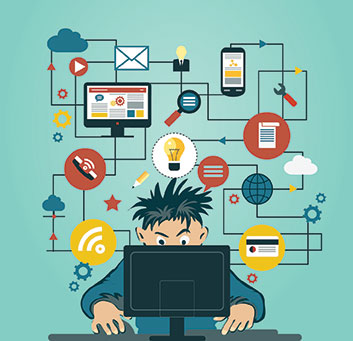
By Richard Comerford
Senior Technical Editor
Electronic Products
The idea behind the Internet of Things has been around for a long time. For years, engineers have spoken about it in terms like machine-to-machine communication, Internet Lightbulb, ubiquitous computing, home automation, Smart Planet, and others. But it’s only now that the idea of a network of inanimate objects that can share relevant information seems to have caught the public’s eye, and it’s done so under the sobriquet of the Internet of Things.
Why is that? Why has it taken this long, and why is it happening now?
Perhaps it’s possible to come to some conclusion about that by looking at two of the articles in this issue. In “Smart sensors: the key to precision agricultural production,” MSIG’s Chief Science Officer, Steve Whalley, points out how agricultural Internets of Things may be the only way to prevent mass starvation 34 years from now. But Rob O’Reilly, who heads ADI’s “Internet of Tomatoes” project that Whalley refers to in his article, notes that the company got farmers involved by enticing them with the prospect of earning more money if the quality of their products was improved to the point that they ended up in the vegetable bin at Key Foods rather than in a bottle of ketchup. Despite the real importance of being able to prevent a global catastrophe, an event that is over three decades away doesn’t really drive people to react now; witness the general reaction to climate-change issues.
In “What is SHaaS, and why should you care?” GreenPeak Technologies founder Cees Links — now General Manager of Qorvo Low Power Wireless — points to a recent study by Comcast and notes that, “The big takeaway from this report is that what consumers really want in the smart home is services — smart home as a service — not a bunch of connected devices that remotely control various widgets and devices in the home.” To me, this seems to point to the heart of the question of why IoT now: People are tired of dealing with making their advanced technology “things” work.
Maybe it started with the now obsolete VCR, when most people found that they had trouble programming them to do their bidding. Or when they tried to set up an HDTV home entertainment system. Or even, as Cees alludes to, trying to effectively use their smartphone when it has screen after screen of app buttons that they have to go through to find the function they want to use.
I think what people are hoping IoT will do is free them from the complexity of dealing with the huge wave of advanced electronics that keeps coming at them. They’d like to be able to say to some Siri-esque service, “I’d like to watch Downton Abbey,” or “I’d like really good seats for the Barenaked Ladies concert next week,” or “Can you take care of these bills but leave me enough for a weekend getaway?” and have it all taken care of — no typing in user IDs and passwords, checking for a hot-spot, downloading and launching multiple apps, answering a GRE’s worth of questions, verifying the result, and so on.
They want Downton Abbey delivered to the TV in front of them without any more fuss; they want their concert tickets confirmed, delivered, and the means of transportation to the concert all set up; they want their systems to manage their finances and ultimately, perhaps, their lives, so that technology finally delivers on the promise of making our lives easier, instead of making them more difficult.
Advertisement
Learn more about Electronic Products Magazine





